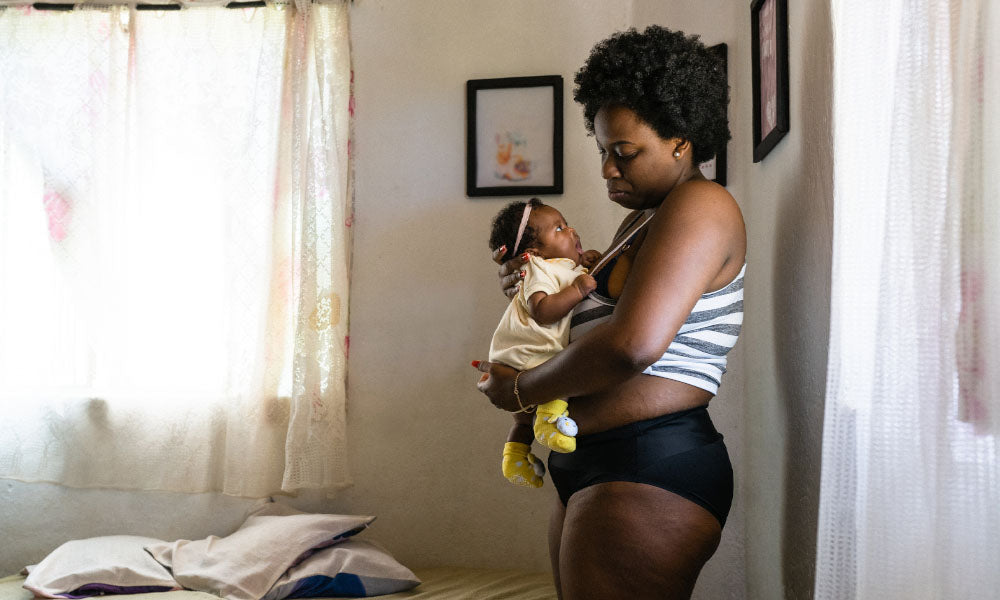Few Americans have the opportunity to interact with recent immigrants on a regular basis. Many of us are disconnected – geographically, socially, or both – from immigrant communities, but have a strong desire to connect our kids to a compassionate and fact-based understanding of their experience.
Rachel Godsil, co-founder of Perception Institute, a consortium of researchers, advocates, and strategists focused on race, gender, and other identities, helped us formulate 10 ways to start.
1 | Look in the mirror, look around
Do your kids come from a family of immigrants? Do they know where they came from? Do they know where their friends and teachers and neighbors came from? “What makes someone an immigrant is that they moved from their country of origin to the Unites States,” says Godsil. “That’s it. When our children realize that our own families or our close friends’ families were once immigrants, hopefully they will be able to see the category of ‘immigrant’ in a positive light despite the hostile rhetoric from the recent campaign.”
2 | Explore similarities and differences
Immigrants’ stories share certain narrative plot points: A departure. A journey. An arrival. A reception. It’s great to explore the common themes of risks and rewards, losses and gains, persecution and freedom. But don’t leave out the differences. Look at how and why certain types of immigrants have been welcome or unwelcome in certain places and time periods. You can put yourselves in the shoes of different immigrant groups during different historical periods and ask each other: What part of immigrating would you have been great at? What part would you have struggled with?
3 | Resist generalities and embrace complexity
“The default in the brain is to generalize,” explains Godsil. Let your kids know that the only way to know how an immigrant feels about his or her experience in America is to know the person for a long time and listen to the person for a long time.
The New York Times ran an excellent profile of a Syrian family who’ve experienced enormous generosity in Canada – but it’s not an uncomplicated happy ending. Their attitudes about assimilation and adaptation are complex. The article would make a great entryway into conversation with middle and high school-aged kids.
4 | Sharing experiences reduces bias
Studies show that the best way to rid your kids of ignorant and phobic biases about immigrants is to genuinely participate in ongoing shared experiences with immigrants. It's not enough to make them aware that immigration exists, or even to find opportunities for your kids to help immigrant families in some way.
Shared schooling is ideal. Shared sports teams or performing arts ensembles are terrific opportunities. Any activity that will invite you to share meals with immigrant families on a regular or semi-regular basis is well worth the effort to discover (local community centers and religious institutions might be a good place to start).
If you live very far away from any immigrant populations, this study documented that sharing the stories of loved ones having intimate and meaningful contact with “outgroups” – which recent immigrants are often considered – will also reduce bias in kids.
5 | Get geographical
Remember physical maps? You might want to hang it prominently in your house. Mark the places in the world your family, friends, teachers, and neighbors come from. Mark the places in the world you’re hearing about in the news. Mark the places in the world the people you’re meeting are from.
6 | Observe the positive contributions of immigrants and the positive influence of immigration.
It’s a lens through which you can look at so much of what you see in fashion, dance, music, film, technology, law, sports – how has this dress or twirl or song or adventure flick been influenced by immigration?
Food is another terrific way in. Are there specialty grocery stores or restaurants frequented by recent immigrants to your town? Go to them! You may be the only native English speakers there. You might have an experience of being an outsider, the experience of having kindness extended to you when you’re out of your comfort zone. Even if you don’t have much human interaction, you’re experiencing and appreciating the contribution of a culture other than your own through the food you eat.
7 | Debunk myths.
“We’ve got to get rid of the idea of the ‘normal’ or ‘regular’ or ‘real’ American,” says Godsil. "It's almost always a coded way of referring to ‘white people’ and excluding people of other races and ethnicities.” For tweens and teens, she recommends the video “What Kind of Asian Are You” by Ken Tanaka, which uses humor to explain this dynamic.
8 | Swap the term “illegal” immigrants with “undocumented” immigrants.
Explain why it’s difficult or impossible for some people to get the proper documentation you need to be an American citizen. Depending on the maturity of your children, address the fears that the children of undocumented immigrants in America have about their fate under Donald Trump.
9 | There is such a thing as too much empathy.
Kids can get exhausted by emotionally triggering exposure to tough stories (adults can, too). Godsil says: “It can lead to crippling anxiety and depression, avoidance of the topic, and to misallocating efforts towards, for example, a specific cute kid seen in a video, over the needs of an entire population.”
The balance between care for others and care for self is a tricky balance indeed; pay attention to clues your child might be offering about her empathy overload level.
10 | Frame their exploration as a gift.
Let’s face it, kids are self-absorbed. It might be good, then, to assure them that their engagement with immigrants will enhance their lives. Studies have shown that diverse groups outperform homogenous groups, not just because diverse groups have a more varied skill set, but because people in diverse groups have to think harder about the presumptions they’re making, which brings out a rigor and ingenuity not demanded of the homogenous group.
“To the extent that we can help our children see themselves as part of a multi-racial/ethnic/religious community that they do not need to dominate,” offers Godsil, “we are giving them a huge gift, because then they are not afraid. When people are afraid they are insular. They lose out.”



